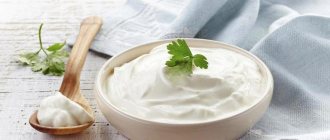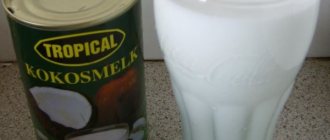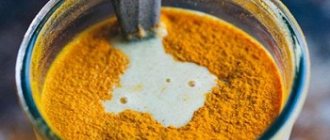12/25/2014 / Dairy products
| Milk 3.2%, BJU and calorie content per 100 g of product | |||
| Calorie content 59 kcal | Proteins 2.9 g | Fat 3.2 g | Carbohydrates 4.7 g |
Our nature has endowed such a valuable product as milk with the most useful proteins and minerals, fats and vitamins. It contains not only the enzymes necessary for the human body, but also lactose (milk sugar), which in its physiology is a source of energy and has a very beneficial and organic effect on the microflora and intestinal condition, protecting against various diseases.
The main feature and uniqueness of milk, of course, is that all the components included in its chemical composition are not only beneficial for the growth and development of children, but are also very well absorbed in the body of a person of any age. Among the most important constituent elements are more than forty-five fatty acids, twenty minerals and twenty amino acids.
The most sold type of milk in the world is 3.2% milk, and its production has become the largest industry. It is this product that is almost impossible to do without in cooking when preparing various dishes that require a certain fat content. Fresh milk is endowed with the most nutritional properties, but since its shelf life is short, the product is subjected to such heat treatments as sterilization, pasteurization and boiling.
Application
Milk 3.2% is considered to be the classic type of milk in terms of fat content. Its use is beneficial even when a person is on a diet. This product goes well with honey, and when baking, each baked product with it will be more fluffy and tastier. Various puddings, creams and even the preparation of semolina porridge require this type of milk.
Market Analytics
- COVID-19 is changing the rules of the game in the cosmetics market
- Beauty of the future: cosmetic innovations 2020
- New ingredients are the driving force of the cosmetics industry
Convenient search for beauty salons on our website
Beauty salons in Moscow Beauty salons in St. Petersburg Beauty salons in Ekaterinburg Beauty salons in Novosibirsk
Latest blog posts on our website
- Naturecream / Geranium (Pelargonium) oil for skin health and beauty
- Prostye-sovety / Save on a beauty salon: procedures that can be done at home
- Naturecream / Growth Factor - brings back youth?
- Oksana-Lezina / 3 effective abdominal exercises from a fitness instructor for beginners
- Prostye-sovety / Making perfect curls at home
- Prostye-sovety / Which hair removal method to choose
- Naturecream / Wrinkles Puppets
- Naturecream / PEPHA-TIGHT - instant skin lifting
- Naturecream / Blue light - a danger to the skin
- Naturecream / Cocoa Butter – A treat for the skin
Latest forum topics on our website
- Mrs._Smith / Badly sunburned! What to do?((
- Ice / Is it necessary to combine fitness classes with a diet?
- Antonova / What can be used for hair loss?
- Radio operatorKat / Who was on a protein diet?
- Suzanna / Mesotherapy on the face
Other articles in this section
| Comte cheese Comte cheese is a French hard cheese made from high-quality unpasteurized cow's milk. The birthplace of this type of cheese is the Franche-Comté region in France on the border with Switzerland. The cheese has a slightly sweetish taste with a nutty tint and a rich aroma. The texture is raw, hard, has a brown crust, this product is light cream in color. |
| Cheese Hermelin This is a delicate, noble cheese with white mold. Hermelin is produced in the Czech Republic; its name means “ermine” in Czech. In appearance, Hermelin cheese is similar to the well-known French cheeses: Camembert and Brie. It is important to note that Czech cheesemakers used Camembert as the prototype for Hermelin. It is made from high quality cow's milk. The head of cheese has a tender, viscous center and a pleasant, dense, white crust. |
| Grana Padano cheese Grana Padano cheese is the name of not just one type of cheese, but a whole group. They differ from other varieties both in appearance and geographical location. This is a hard cheese that is very popular in Italy and all over the world. The history of this cheese dates back to Ancient Rome, where it is considered one of the first cheese varieties. It is named after a river called the Po, which flows in Italy. A distinctive feature of this cheese is its grainy structure. Its taste is quite piquant, slightly salty, with a subtle nutty flavor. This cheese is based on cow's milk, which takes a full year and a half to mature. It is quite popular among true gourmets around the globe. And all thanks to its exquisite taste and aroma, which simply does not have anything like it. |
| Sweetened condensed milk Condensed milk was invented in Paris. One pastry chef named Upper decided to boil the juice directly in a closed jar. As a result, he got a product that could not spoil for a long time. This event took place in 1804. The confectioner decided to experiment not only with juice, but also with milk. In the end, it was he who managed to prepare the first condensed milk. He made it in tin cans. |
| Cheese Kurt It is a traditional dish in the countries of Central Asia, and is also quite common in Western Asia. Its production is carried out in this way: curdled milk (cow, goat or sheep) is rolled into small balls, adding some salt, laid out on a board, covered with a towel and taken out in the sun to dry. The whole process takes about 4 days. Kurt cheese is very nutritious, and in hot weather it lasts for quite a long time and is resistant to temperature changes. |
| Natural yogurt 2% Homemade yogurt was first produced in the Balkans. This territory is located in Bulgaria. When housewives realized that already sour milk could retain its properties much longer, they began adding a special starter to the still fresh drink. This is what created the tradition of producing natural yogurt. |
| Rougette cheese Rougette cheese is a cheese with an attractive and refined taste. Bavaria is considered the birthplace of this cheese. The basis of the product is cow's milk and cream. Its distinctive feature is the paprika-based crust, which turns red. And the characteristic ammonia taste, washing the cheese rind five times and an equally noticeable piquant smell distinguishes it from other soft varieties. |
| Asiago cheese In the south of Europe there is a small but very beautiful state, which is famous for its great and rich history, beautiful architecture, the unique aroma of wines and the sophistication of various dishes. Of course, this is Italy. Cheese occupies a significant place in Italian cuisine. There are more than 400 varieties of this Italian product, but there are some that are known all over the world. It is thanks to climatic conditions, centuries-old recipes and manufacturing technology that the taste of each cheese is famous for its uniqueness and originality. One of the cheeses that is among the ten best cheeses in Italy is the semi-soft cheese Asiago, whose history dates back about a thousand years ago. Asiago begins its history in the Trentino region. In the beginning, cheese was made from sheep's milk, but since the 15th century, due to progress in cheese making, cow's milk came to replace it. It was only in the 20th century that maturation stages were included in the production process. Nowadays, you can find two types of Asiago cheese - fresh (young) Presato and ripened d'Allevo. |
| Limburger cheese Limburger cheese comes from a small principality, currently divided between three states: Germany, the Netherlands and Belgium. It first appeared among gourmets at the beginning of the 19th century and remains a delicacy for true connoisseurs to this day. |
| Katyk 6% Katyk is a widespread sour milk in the Middle and Near East. It differs from ordinary yogurt by the method of sourdough. To prepare katyk, milk is first heated in the oven, without bringing it to a boil and losing 15-30% of the water. To avoid premature curdling, the milk is filtered and then, at a temperature of 30-40° C, the katyk of the previous day is introduced as a starter. It is thanks to the manufacturing technology that Katyk is obtained with good fat content. |
Milk. Chemical composition and nutritional value
Telegram
VK
Milk is a biologically highly valuable food product, especially for children. It contains complete proteins, fats, phosphatides, fat-soluble vitamins, and mineral salts. In total, about 100 biologically important substances have been found in milk. The chemical composition of milk is as follows: proteins 3.5%, fats 3.4%, milk sugar 4.6%, mineral salts (ash) 0.75%, water 87.8%. The chemical composition of milk varies depending on the breed of animals, time of year, nature of feed, age of animals, lactation period, milk processing technology.
| Nutritional value per 100 g | ||
| Calorie content | 65 kcal | 4.23% |
| Squirrels | 3.2 g | 3.48% |
| Fats | 3.6 g | 5.29% |
| Carbohydrates | 4.8 g | 3.43% |
| Alimentary fiber | 0 g | 0% |
| Water | 87 g | 3.18% |
Milk proteins are easily accessible to digestive enzymes, and casein has a unique property, forming a glycopolymacropeptide during digestion, and has a regulatory effect on increasing the digestibility of other nutrients.
Milk proteins are represented by casein, albumin and globulin. They are complete and contain all the amino acids necessary for the body. Casein in milk is in the form of caseinogen bound to calcium. When milk sours, calcium is split off from casein, which, when curdled, precipitates.
Milk fat in milk is in the form of tiny fat globules measuring 0.1-10 microns. When milk sits, fat globules rise upward due to their low specific gravity, forming a layer of cream. Due to the low melting point (within 28-36 °C) and high dispersion, milk fat is absorbed by 94-96%. As a rule, the fat content of milk is higher in autumn, winter and spring than in summer. It also increases towards the end of the lactation period. The conditions under which the animal is kept and the nature of the food are of great importance. With good care, the amount of fat in milk can reach 6-7%:
Read also: Vitamins
Carbohydrates in milk are in the form of milk sugar - lactose, which tastes less sweet than plant sugar, but is not inferior in its nutritional value. When boiled, milk sugar caramelizes, giving the milk a brownish color and a specific aroma and taste. Milk sugar is of great importance in the production of lactic acid products. Under the influence of lactic acid bacteria it is converted into lactic acid; this causes casein to coagulate. This process is observed in the production of sour cream, yogurt, cottage cheese, and kefir. Milk contains phosphorus, calcium, potassium, sodium, iron, and sulfur. They are found in milk in an easily digestible form, which is especially important in early childhood, when milk is the main food product. Among the microelements, milk contains zinc, copper, iodine, fluorine, and manganese.
The main vitamins in milk are vitamins A and B, some amounts of ascorbic acid, thiamine, riboflavin, and nicotinic acid. Their content is subject to significant fluctuations. In the summer, when animals eat succulent green food, the content of vitamins in milk increases. In winter, due to the transition to dry food, the amount of vitamins in milk decreases. In the future, the content of vitamins depends on the conditions of storage, transportation and processing of milk. The average content of ascorbic acid in milk is 6.6-18.9 mg, thiamine 370-485 mcg, nicotinic acid 1500 mcg, riboflavin 952-1580 mcg, vitamin A 0.1-0.35 mg, carotene 0.08-
0.23 mg per 1 l. The calorie content of milk is low and averages 65-66 kcal per 100 g of product.
Milk contains a number of enzymes. The main ones are: phosphatase, peroxidase, reductase, amylase, lipase and catalase.
How to avoid getting burned with milk? Expert advice on choosing milk on the store shelf
Ultra-pasteurized milk - what are the advantages?
When choosing milk, experts advise paying attention to what kind of heat treatment it went through before hitting the store shelf. As explained by the chief specialist, expert of the Union of Consumers of the Republic of Tatarstan Iraida Pursanova, drinking milk is divided into four types according to heat treatment methods: sterilized, melted, pasteurized and ultra-pasteurized. In her opinion, the best way is ultra-pasteurization - only 10 percent of the vitamins are lost.
“Ultra-pasteurization is needed to extend the shelf life of the product, while its beneficial properties are better preserved. Due to the high temperature, bacteria in milk are completely destroyed. Therefore, the consumer can be safely advised to buy ultra-pasteurized milk,” said an expert from the Union of Consumers of the Republic of Tatarstan.
As noted on the website of the Russian Institute of Consumer Testing, during ultra-pasteurization milk is heated for one or two seconds to a temperature of 135–150 °C and sharply cooled to 4–5 °C.
Drinkable, whole, normalized, homogenized - what's the difference?
Experts from the Russian Institute of Consumer Testing note that all the milk on store shelves is drinkable. The original milk from a cow can be called raw.
When a milk manufacturer writes “normalized” on the label, don’t be alarmed. This mark means that the original milk, in other words milk “from under the cow” with natural fat content, has gone through the process of normalization. After this, the fat content of the milk was brought to the desired level: 3.2 percent, 2.5 percent, 1.5 percent. This is done by mixing full-fat and skim milk.
Photo: Dinara Prokopyeva
There is also a homogenization process, in which the fat globules are crushed - this way the milk is better absorbed by the body.
If the package says “whole,” this means that the milk has been heat-treated and homogenized, but has natural fat content.
Milk that consists entirely or partially of milk powder is called reconstituted milk. To do this, the powder is dissolved in drinking water, after which milk fats are added to the required fat content.
What should milk taste and color like?
“In appearance, milk is an opaque liquid. The color is white; for skim milk a blue tint is allowed. For sterilized milk it is a light cream shade, and for baked milk it is a cream shade. There should be no foreign smell or taste. Only a slight taste of boiling is allowed,” explained Iraida Pursanova.
She notes that for milk with more than 4.7 percent fat by weight, some fat separation is acceptable. It should disappear when stirred.
“The consistency of milk should be liquid, homogeneous, not viscous, slightly viscous. Sometimes we conduct tastings, protein flakes are found, but this is unacceptable,” said the chief specialist, expert of the Union of Consumers of the Republic of Tatarstan.
According to her, protein flakes in milk can occur if the store violates the storage temperature conditions.
As for fat content, its indicator can be checked only in laboratory conditions.
How long can opened milk be stored in the refrigerator?
An expert from the Union of Consumers of the Republic of Tatarstan notes that the shelf life of milk is not regulated by GOST and is set by the manufacturer. How long milk will be stored in a closed package depends solely on the heat treatment that the product has undergone and its packaging. On average, the shelf life of UHT milk, subject to temperature conditions, is from 3 to 6 months, notes Iraida Pursanova.
Photo: Dinara Prokopyeva
At the same time, the Russian Institute of Consumer Testing notes that not all milk producers indicate the storage conditions for an open package, namely the temperature and shelf life. Thus, the requirements of the technical regulations of the Customs Union are violated. To avoid guessing, remember: an opened package of milk must be stored in the refrigerator for no more than three days.
Zelenodolsk milk passed the tests with ease, but “Just Milk” turned out to be not so simple
The Consumer Union of Tatarstan acted as a partner in the study of the Russian Institute of Consumer Testing. UHT milk of four brands was purchased in Kazan: “Prosto Moloko” (Agrosila-Moloko LLC, Naberezhnye Chelny), “Very Important Cow” (Zelenodolsk Dairy Processing Plant JSC), “Red Price” (Pavlovsky Dairy Plant JSC) , Nizhny Novgorod region), “Housewife's Choice” (JSC ALEV, Ulyanovsk region).
The test results were mostly positive. First of all, no vegetable fats, so the milk is real. The producers also did not lie about the volume, and in some cases there was more milk than indicated on the package.
One of the Tatarstan manufacturers passed the test without any comments. We are talking about the milk “Very Important Cow” of the Zelenodolsk dairy processing plant. In fact, the fat content corresponded to the 3.2 percent indicated on the package, and as for the volume, the manufacturer even added 10 ml for free.
Photo: ripi-test.ru
The milk of the three remaining brands faced various obstacles during testing. For example, in the “Simply Milk” sample purchased in Kazan, the fat content was lower than normal - 2.85 percent instead of 3.2. The milk fat content of the control sample “Simply Milk” was also below the norm (3.1 percent). Agrosila-Moloko did not agree with these conclusions of the Russian Institute of Consumer Testing and promised to notify about the results of its verification of this fact.
Photo: ripi-test.ru
Milk from the Ulyanovsk region of the brand “Housewife's Choice” found itself in approximately the same situation. The manufacturer violated GOST, because the actual fat content turned out to be lower than declared - 2.5 percent instead of 3.2.
Photo: ripi-test.ru
Not at the first inspection, milk from the Nizhny Novgorod region of the “Red Price” brand was recognized as complying with GOST. The fat content of the first tested sample turned out to be below normal, and the two control samples (stored in RIPI and at the manufacturer) were normal.
In addition, labeling comments arose regarding milk of the “Red Price” and “Very Important Cow” brands. Manufacturers forgot to indicate data on the storage conditions of milk in open packaging, thereby violating technical regulations.
Photo: ripi-test.ru











